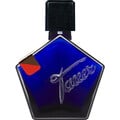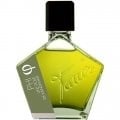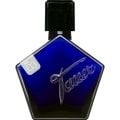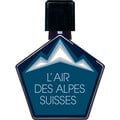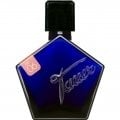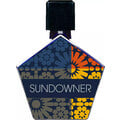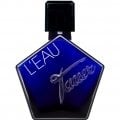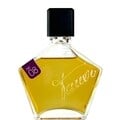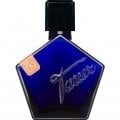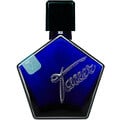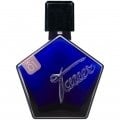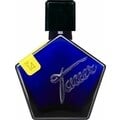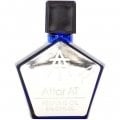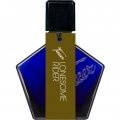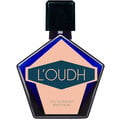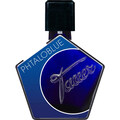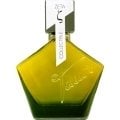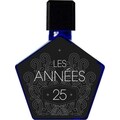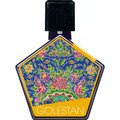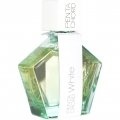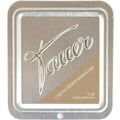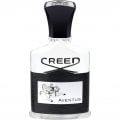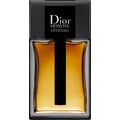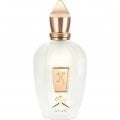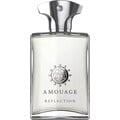03/24/2021

Siebenkäs
35 Reviews
Translated
Show original

Siebenkäs
Top Review
30
The desert.
In the middle of the night he woke up.
He suddenly knew what it was that made many people
so excited and driven and somehow almost carries
about this stuff called "perfume."
And how the string that makes perfume sound
can vibrate in harmony with other strings.. for example, in mountains, raccoons, or second-hand
car dealers.
And what all this has to do with the core of the world,
with our reason for being and understanding of the world.
It was so amazingly simple. Perfectly clear.
Strange that no one had noticed it yet.
And now he, of all people!
He really had to write it down, right away.
And then - it was gone again.
What a shame.
The next morning, the scent he had
The day before was still hanging in his sweater.
It was L'Air du Desért Marocain.
He decided to spray it on himself again.
He could almost enjoy perfume immoderately.
"More than I really deserve," he often thought.
However, this fragrance was really something special.
What the name stoked in expectations, was first
times hardly fulfilled - he began with a startling
Freshness - but one that was anything but ordinary.
Of course, he had a list of ingredients,
but there was little to really unravel here.
There was something almost citrusy, with a slight bitterness
Mixed in it, but also a certain sweetness,
which in the background also carried something controlledly unclean
that he couldn't explain.
A wild mixture of spices seemed to resonate;
it, too, could not be grasped in any concrete way.
Something even reminded him of Open by Roger Gallet,
this somehow fresh-derbe spice perhaps.
And something seemed different about the scent than usual
poled - the projection seemed to him to
become stronger rather than lessen as time went on grow stronger rather than diminish.
What did all this have to do with "desert," even with the
Morocco? Well, there was something very dry in the
Fragrance, but also something flowing-creamy.
Something hearty, probably from spices like coriander
and cumin, but nothing derbes.
Something woody anyway, cedar and sandalwood,
though also hard to tell apart.
And what did the sweetness come from?
Lots of contradictions actually.
Maybe that was one reason why he liked the scent
so much.
The next night he dreamt nothing
that seemed worth writing down.
Basically, it was just two dreams, both of which he
among the "spoilsports dreams" which
at times.
At first he was a professor at an art academy.
His occupation was to forbid the students
to forbid them to use any other color.. please no cobalt blue and no Indian yellow and
very little cadmium red.
After that he taught composition at the conservatory -
and it was similar. Just no B flat minor and if E major,
then only without major thirds. And chromaticism only quite,
very limited.
He awoke and was glad that the sun was shining.
It seemed to him a good day for more L'Air du Desert.
As he wore the same sweater and sprayed again after-
spray, he now seemed to hear the full orchestra of the fragrance
to hear. The drydown was dominated by resinous
Sounds, arranged around wonderful amber.
Memories were there too - a faint, distant whiff of
Jicky, perhaps? But also still that cistus.
And spices, possibly dry vetiver too.
In any case dry, but also sweet.
A seeming contradiction, if you ever
thought of wine.
And again the question: what has all this to do with desert?
All sorts of things went through his head.
Contradictions that nevertheless form a harmony.
Like in this perfume.
The desert is very hot. And very cold at night.
In any case, it is completely dual.
Sand and light. Heaven and earth. Heat and cold.
And place of inner contemplation. 40 days in the desert.
Meditation, temptation, knowledge.
Inner contemplation. Or even conversion.
Deciding to change his whole life.
This very thought made him strangely uneasy.
This was the desert that Kerouak's heroes sometimes visited one finds it not only in Morocco, but also in Palestine
and Arizona. Or in Castrop Rauxel.
And this friendly, not at all austere sweetness, which even
reminiscent of vanilla?
Doesn't it go perfectly with what desert
is mostly made of - sand?
Children's sand, more carefully considered.
Ringelnatz's poem came back to him:
The most beautiful thing for children is sand There's always plenty of it.
It runs incomparably
through the hand
Because you keep your nose,
when you fall on it,
he is so soft.
Children's hands feel,
when they dig in it,
Nothing and the kingdom of heaven.
For no child laughs
At ground power.
There was indeed a great deal in it, in this
Fragrance. For him, anyway. A great deal was happening at once.
You might say - there was a certain disorder.
Wasn't that also stuck in desert - but here it looks "desert"
look?
But desolate could also mean "wild" - e.g. when
one was "ranting desolately".
And - did he still have a bit of that kind of desert
quality stored up inside him?
He was suddenly quite sure.
He would quit his job and go back to
his sister at the cafe.
Maybe even cook.
His job at that establishment just wasn't
right for him, even though it paid very well.
And despite the certain power it
appeared to give him seemed to confer.
There was something cold
about the very name of this institution and somehow ruthless sounding, something that
sounded like unquestioning submission.
He muttered her name to himself a few times,
as if to cast a spell: "IFRA, IFRA, IFRA..."
He suddenly knew what it was that made many people
so excited and driven and somehow almost carries
about this stuff called "perfume."
And how the string that makes perfume sound
can vibrate in harmony with other strings.. for example, in mountains, raccoons, or second-hand
car dealers.
And what all this has to do with the core of the world,
with our reason for being and understanding of the world.
It was so amazingly simple. Perfectly clear.
Strange that no one had noticed it yet.
And now he, of all people!
He really had to write it down, right away.
And then - it was gone again.
What a shame.
The next morning, the scent he had
The day before was still hanging in his sweater.
It was L'Air du Desért Marocain.
He decided to spray it on himself again.
He could almost enjoy perfume immoderately.
"More than I really deserve," he often thought.
However, this fragrance was really something special.
What the name stoked in expectations, was first
times hardly fulfilled - he began with a startling
Freshness - but one that was anything but ordinary.
Of course, he had a list of ingredients,
but there was little to really unravel here.
There was something almost citrusy, with a slight bitterness
Mixed in it, but also a certain sweetness,
which in the background also carried something controlledly unclean
that he couldn't explain.
A wild mixture of spices seemed to resonate;
it, too, could not be grasped in any concrete way.
Something even reminded him of Open by Roger Gallet,
this somehow fresh-derbe spice perhaps.
And something seemed different about the scent than usual
poled - the projection seemed to him to
become stronger rather than lessen as time went on grow stronger rather than diminish.
What did all this have to do with "desert," even with the
Morocco? Well, there was something very dry in the
Fragrance, but also something flowing-creamy.
Something hearty, probably from spices like coriander
and cumin, but nothing derbes.
Something woody anyway, cedar and sandalwood,
though also hard to tell apart.
And what did the sweetness come from?
Lots of contradictions actually.
Maybe that was one reason why he liked the scent
so much.
The next night he dreamt nothing
that seemed worth writing down.
Basically, it was just two dreams, both of which he
among the "spoilsports dreams" which
at times.
At first he was a professor at an art academy.
His occupation was to forbid the students
to forbid them to use any other color.. please no cobalt blue and no Indian yellow and
very little cadmium red.
After that he taught composition at the conservatory -
and it was similar. Just no B flat minor and if E major,
then only without major thirds. And chromaticism only quite,
very limited.
He awoke and was glad that the sun was shining.
It seemed to him a good day for more L'Air du Desert.
As he wore the same sweater and sprayed again after-
spray, he now seemed to hear the full orchestra of the fragrance
to hear. The drydown was dominated by resinous
Sounds, arranged around wonderful amber.
Memories were there too - a faint, distant whiff of
Jicky, perhaps? But also still that cistus.
And spices, possibly dry vetiver too.
In any case dry, but also sweet.
A seeming contradiction, if you ever
thought of wine.
And again the question: what has all this to do with desert?
All sorts of things went through his head.
Contradictions that nevertheless form a harmony.
Like in this perfume.
The desert is very hot. And very cold at night.
In any case, it is completely dual.
Sand and light. Heaven and earth. Heat and cold.
And place of inner contemplation. 40 days in the desert.
Meditation, temptation, knowledge.
Inner contemplation. Or even conversion.
Deciding to change his whole life.
This very thought made him strangely uneasy.
This was the desert that Kerouak's heroes sometimes visited one finds it not only in Morocco, but also in Palestine
and Arizona. Or in Castrop Rauxel.
And this friendly, not at all austere sweetness, which even
reminiscent of vanilla?
Doesn't it go perfectly with what desert
is mostly made of - sand?
Children's sand, more carefully considered.
Ringelnatz's poem came back to him:
The most beautiful thing for children is sand There's always plenty of it.
It runs incomparably
through the hand
Because you keep your nose,
when you fall on it,
he is so soft.
Children's hands feel,
when they dig in it,
Nothing and the kingdom of heaven.
For no child laughs
At ground power.
There was indeed a great deal in it, in this
Fragrance. For him, anyway. A great deal was happening at once.
You might say - there was a certain disorder.
Wasn't that also stuck in desert - but here it looks "desert"
look?
But desolate could also mean "wild" - e.g. when
one was "ranting desolately".
And - did he still have a bit of that kind of desert
quality stored up inside him?
He was suddenly quite sure.
He would quit his job and go back to
his sister at the cafe.
Maybe even cook.
His job at that establishment just wasn't
right for him, even though it paid very well.
And despite the certain power it
appeared to give him seemed to confer.
There was something cold
about the very name of this institution and somehow ruthless sounding, something that
sounded like unquestioning submission.
He muttered her name to himself a few times,
as if to cast a spell: "IFRA, IFRA, IFRA..."
24 Comments

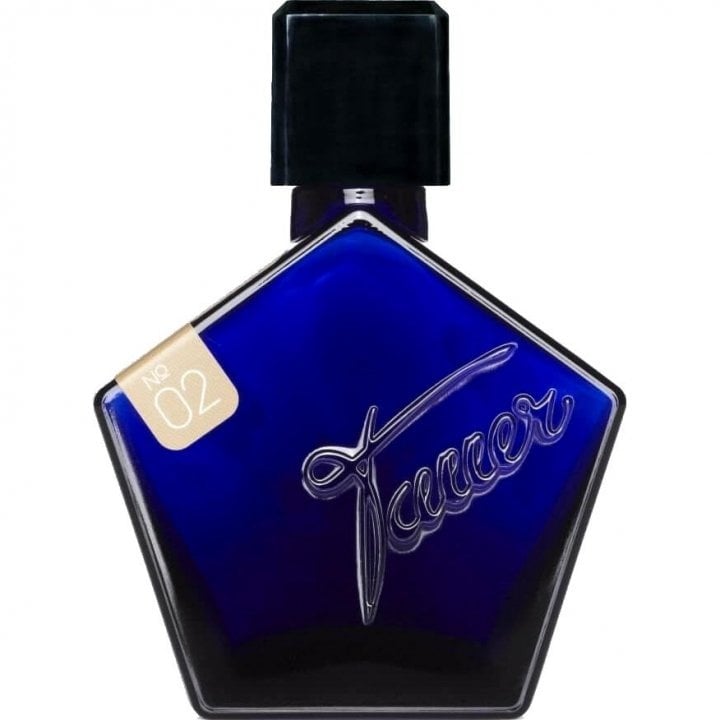


 Top Notes
Top Notes 


 Heart Notes
Heart Notes 

 Base Notes
Base Notes 










 SamuelGustav
SamuelGustav Static
Static Jeanbpdx
Jeanbpdx BertolucciK
BertolucciK Syzygy73
Syzygy73